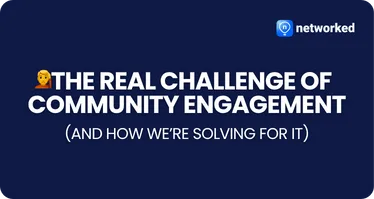User-generated content (UGC) is one of the most effective ways for brands and small businesses to build trust and engagement within their communities. Unlike traditional marketing, UGC is created by real customers, making it feel more authentic and relatable. It encourages participation, strengthens brand loyalty, and increases visibility.
This guide explores how brands can use UGC to foster authentic community interaction and drive meaningful engagement.

Benefits of User-Generated Content
1. Authenticity and Trust
Consumers trust content created by other customers more than branded advertisements. UGC provides real-life experiences that potential customers can relate to, increasing credibility.
2. Higher Engagement Levels
UGC encourages active participation. When customers see their content featured, they are more likely to engage with the brand and share their experiences with others.
3. Cost-Effective Content Strategy
Instead of producing all content in-house, brands can leverage customer-created content. This reduces marketing costs while maintaining a steady stream of authentic material.
4. Stronger Community Bonds
UGC fosters a sense of belonging. When customers contribute content, they feel like valued members of the brand community, strengthening their connection to the brand.
How to Encourage User-Generated Content
1. Create a Safe and Supportive Environment
Customers are more likely to share content if they feel comfortable and valued. Establish clear community guidelines to foster positive interactions and ensure inclusivity.
2. Run Contests and Challenges
Encourage participation by creating themed challenges or contests. Offer incentives such as discounts, giveaways, or social media features to reward contributors.
3. Showcase and Celebrate Contributions
Highlight user-generated content on your brand’s website, social media channels, or newsletters. Recognizing contributors boosts engagement and encourages more participation.
4. Provide Easy Sharing Tools
Make it simple for users to share their content. Integrate social media sharing options, hashtags, and submission forms on your website to streamline the process.
5. Leverage Customer Reviews and Testimonials
Encourage customers to leave reviews, share testimonials, or create video feedback. This not only generates content but also enhances credibility and trust.
Types of User-Generated Content to Leverage
1. Social Media Posts and Hashtags
Encourage users to tag your brand or use a specific hashtag when sharing their experiences. This helps aggregate content and creates a stream of authentic brand mentions.
2. Video Testimonials and Reviews
Video content is highly engaging. Ask satisfied customers to share video testimonials about their experiences with your brand.
3. Community Discussions and Forum Contributions
Create a space where customers can ask questions, share insights, and engage in discussions. Forums and Facebook groups are excellent for this.
4. Product Photos and Unboxing Videos
Encourage customers to share photos and videos of their product experiences. Featuring these on your website or social media enhances credibility and relatability.
5. Customer Blogs and Guest Posts
If your community includes knowledgeable members, invite them to write guest posts or blogs sharing their experiences or expertise.
Measuring the Impact of User-Generated Content
To ensure your UGC strategy is effective, track key metrics:
Engagement Rates: Monitor likes, shares, and comments on UGC posts.
Referral Traffic: Measure website visits generated from UGC.
Conversion Rates: Track how UGC influences purchasing decisions.
User Participation: Evaluate the number of users contributing content over time.
Final Thoughts
User-generated content is a powerful tool for brands and small businesses looking to build trust and community engagement. By creating a supportive environment, celebrating contributions, and leveraging different types of content, brands can create a thriving, authentic online community that strengthens customer loyalty and drives long-term success.




